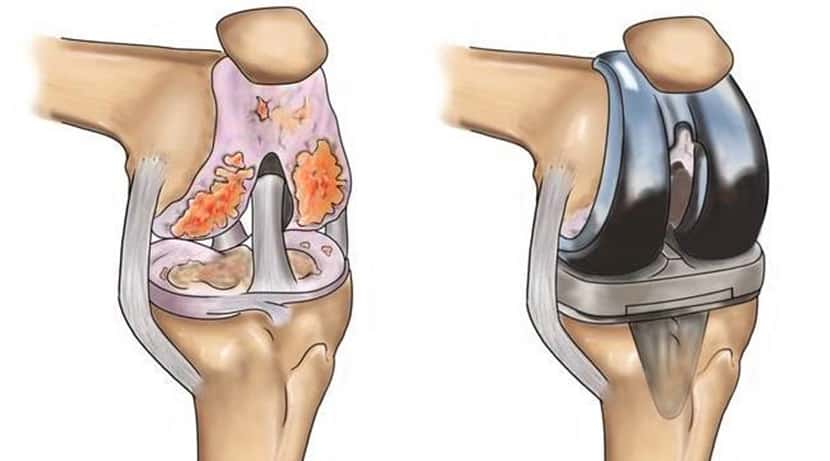Knee Replacement vs Knee Arthroscopy: Which is Right for You?
Knee replacement is a surgery that is carried out to replace parts of an injured or worn-out knee joint. The surgery is aimed at making the knee work better or eliminating pain. Knee arthroscopy, on the other hand, is a minimally invasive procedure that is used to treat a range of knee injuries. Contrasts and… Read More
Top Doctors For Knee Replacement vs Knee Arthroscopy: Which is Right for You? Treatments
Top Hospitals For Knee Replacement vs Knee Arthroscopy: Which is Right for You? Treatments
Knee Replacement vs Knee Arthroscopy: Which is Right for You?
Knee replacement is a surgery that is carried out to replace parts of an injured or worn-out knee joint. The surgery is aimed at making the knee work better or eliminating pain. Knee arthroscopy, on the other hand, is a minimally invasive procedure that is used to treat a range of knee injuries. Contrasts and distinctions will be made on both topics in this article.

What is Knee Arthroscopy?
Knee arthroscopy is a procedure that is used by healthcare providers to diagnose and manage a wide range of knee issues. The procedure is done by inserting a tiny camera into the knee through an incision. The camera shows the inside of the knee, and it is projected onto a screen in the operating room. These images show the healthcare providers the issues with the knee, thus helping them in diagnosis. This procedure is common, and it is minimally invasive, that is, they require smaller incisions than the traditional surgery. The incisions may be as small as a keyhole. To treat the problem, the healthcare provider then inserts tiny tools through another small incision. The tools are used to repair or remove the damaged tissue.
What issues can knee arthroscopy be used for?
Some of the problems that knee arthroscopy can be used for include:
- Diagnose injuries – This is one of the main uses of knee arthroscopy; the healthcare provider will closely examine any area of the knee that is swollen or painful. The inserted camera will reveal any area that is damaged, be it soft tissue or bones. The images got help the healthcare provider diagnose an injury and then plan a treatment strategy. The images can also help to confirm a diagnosis.
- Repairing injuries – If a patient requires surgery to repair tendons, ligaments, or even cartilage, the healthcare provider will use specially designed tools in the procedure to carry it out. The camera helps in guiding the procedure and visualizing the injured area. The tools are then used to repair and reconstruct the tissues, by suturing them. The tools can even be used in stitching bones together.
- Remove damaged tissues – Some of the tools have also been specialized to remove or shave off damaged tissues like bones, cartilage, or inflamed tissues like synovia. These tools cut off and remove these tissues from the knees.
Who needs knee arthroscopy?
The healthcare provider will recommend that procedure if the patient has persistent knee pain that does not get any better with non-surgical treatment. This non-surgical treatment includes measures like resting, the use of ice packs, physical therapy, medication, and other measures. It is also important to note that even though knee pain can be caused by osteoarthritis, knee arthroscopy is not the ideal treatment for it as it is not always effective. Knee arthroscopy is mainly used to diagnose and treat issues that deal with ligaments and cartilage in the knee joint.

What conditions can knee arthroscopy treat?
Some of the injuries that can be treated by knee arthroscopy include:
- Soft tissue injuries – Soft tissues like ligaments and tendons can get injured. Some of the most common injuries include – tears to the anterior cruciate ligaments and medial collateral ligament, torn meniscus, and bursitis.
- Fracture – Bones can break or chip off inside the knee. Also, pieces of cartilage can break off when the bone fractures.
- Inflammation – The synovium in a knee can become inflamed. Synovium is soft tissue on the inside of the joint. Healthcare providers refer to this as synovitis.
What is Knee Replacement?
Knee replacement surgery is done to replace part of the injured or worn knee joints. The surgery is aims at alleviating pain and improving the mobility of the knee. During the surgery, parts of the knee are removed and replaced with plastic, ceramic, or metal parts. In order to decide on the appropriateness of the knee replacement, the surgeon will examine the patient’s knee range of motion, stability, and strength. They will also carry out an X-ray so that they can visualize the extent of the damage. The right prosthetic joint and surgical approach will mostly depend on the patient’s age, weight, degree of activity, knee size and shape, and overall health.

What is the reason for carrying out knee replacement surgeries?
The most cogent reason for knee replacement surgery is to stop the pain that is caused by arthritis. The people that need knee replacement surgery are those that have issues with walking, getting up from chairs, climbing stairs, and general activity. In the instance that only a part of the knee is damaged, surgeons can replace only that part. If the entire knee joint needs replacement, however, the ends of the thigh bone and the shin bone (femur and tibia, respectively) are reshaped and resurfaced. These bones are hard tubes with soft cores (bone marrow). Ligaments as well are bands of tissues that help in holding joints together. If the patient’s knee ligaments are not strong enough to hold the joint together by themselves, the surgeon may choose implants that can act better than the ligaments, so the bones don’t come apart.
What are the risks that come with knee replacement surgery?
Just like any other surgery, knee replacement surgeries have their risks and these include:
- Infection – Infection can occur at the incision site, or in the deeper tissue areas. Surgery may sometimes be carried out to treat an infection.
- Blood clots – Surgeons will usually recommend blood-thinning medication to prevent this from happening. The most common site for the occurrence of blood clots is in the leg. However, they can travel to the lungs or the brain and become deadly.
- Nerve damage – It is also possible during the surgery for nerves in the surgery area to be damaged during the procedure. This can lead to numbness, further pain, and even weakness.
The implants that are used for knee replacements are usually durable, but they may become worn or loosen over time. In this instance, another surgery may be needed to replace the loose or worn parts.



















































































































































































